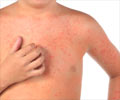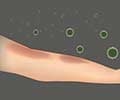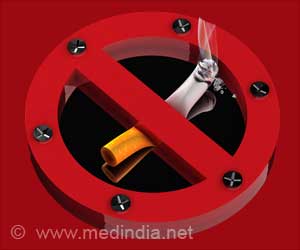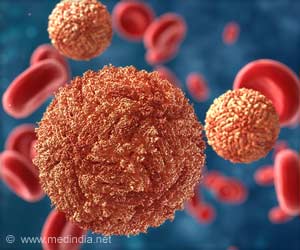The appearance of a rash in cancer patients treated with erlotinib (Tarceva) is strongly associated with longer survival.
Researchers from OSI Pharmaceuticals, Inc found that the appearance of a rash in cancer patients treated with erlotinib (Tarceva) is strongly associated with longer survival.
This is not the first time that rash has been associated with a survival advantage with EGFR inhibitors - a class of drugs which includes erlotinib, cetuximab, panitumumab and others designed to block overproduction of the epidermal growth factor receptor - but it is the most detailed analysis to date.The study, published in the July 1 issue of Clinical Cancer Research, a journal of the American Association for Cancer Research, reports that for patients taking Tarceva who developed a moderate to severe rash, survival without progression of disease was 245 percent longer than in patients who had a mild rash or none at all. In fact, in the majority of cases, the more severe the rash, the longer a patient's cancer was held in check, researchers found.
This rash, which often looks like acne, can be unpleasant enough for some people to consider discontinuing treatment, but "it is important for physicians and patients to understand that this a positive event because it means there is likely to be a better clinical outcome," said the lead author, Bret Wacker, MS Director of Biostatistics at OSI Pharmaceuticals, Inc.
"Further studies are needed to both identify patients most likely to develop rash and to determine if dose escalation to induce rash can improve efficacy."
Although few patients dropped out of the large Phase III clinical trials testing Tarceva in advanced non-small cell lung cancer and pancreatic cancer due to the rash, Wacker said he fears those who are taking Tarceva outside of a clinical trial may be likely to stop treatment.
"Some patients are stopping treatment because of the rash, yet those are the ones who are most likely to benefit," Wacker said. "This is a critical problem and rather than permanently discontinue treatment, patients should talk to their doctor about an effective and proactive strategy to manage the rash while continuing Tarceva therapy."
Advertisement
The analysis looked at two placebo-controlled, double-blind, randomized, Phase III clinical trials testing Tarceva in advanced non-small cell lung cancer and pancreatic cancer - studies which led to approval of the agent for treating both cancers. Wacker and his team excluded patients who died in the first month after starting the study because they may not have had time to develop the rash or the rash may have been under-reported in these ill patients.
Advertisement
The researchers found that the presence of any rash correlated with overall and progression-free survival and that these correlations increased with the grade of rash. Specifically, Tarceva-treated patients who did not develop a rash survived a median of 3.3 months, compared to 7.1 months for those with a grade 1 rash, and 11.1 months for patients with more severe, grade 2 rashes.
They also found, however, that 18 percent of patients treated with a placebo also developed a rash, and that overall survival in these patients was also significantly longer (a median of 8.2 months compared to 4.7 months), compared to placebo patients who didn't develop a rash. "We don't know why some patients treated with a placebo developed a rash, but it could be due to the strength of their immune system, and that is why they survived longer," Wacker said.
In the second clinical trial (known as PA.3) that tested Tarceva and the chemotherapy drug gemcitabine against a placebo drug and gemcitabine in 521 patients with advanced pancreatic cancer, 71 percent of patients using Tarceva/gemcitabine developed a rash, compared with 30 percent of patients in the placebo group.
This increased rate of rashes in the placebo group makes some sense, Wacker said, because rashes are known to occur with use of gemcitabine chemotherapy. But, unlike the BR.21 study, these pancreatic cancer patients with rashes in the placebo group did not experience an increase in survival compared to placebo group patients without a rash.
In the Tarceva treatment group, only a more severe rash of grade 2 or higher was associated with increased survival. Patients with a grade 2 rash survived a median of 10.8 months, compared to treated patients with no rash (5.4 months) or a grade 1 rash (5.7 months). "These different results may be associated with the addition of gemcitabine with Tarceva, or the lower dose of Tarceva in this study, but we just don't know," he said.
Wacker points out that lack of a rash doesn't necessarily mean that patients will not benefit from Tarceva. "A small percentage of patients who didn't develop a rash still had relatively long survival," he said. "But, still, overall, patients who don't develop a rash don't do as well as those who do."
Source-Eurekalert
JAY/M











